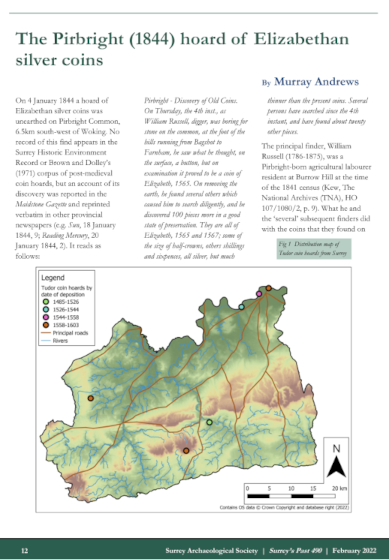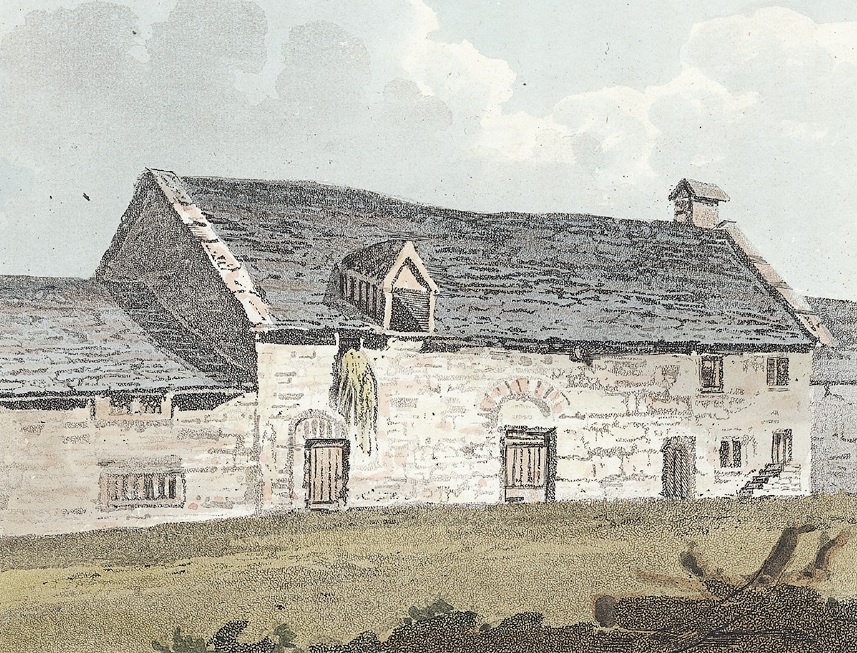I’ve just got my hands on a copy of the February 2022 edition of Surrey’s Past, the new-look version of the Surrey Archaeological Society’s (SyAS) venerable Bulletin. This issue contains fascinating insights into the ongoing SyAS excavations at Cock’s Farm, Abinger, new thoughts on the Anglo-Saxon cemetery at Guildown, and much else inbetween, including a short note by me on the Pirbright hoard of Elizabethan silver coins.

Discovered in 1844 but long since lost, the Pirbright hoard was previously unknown to scholarship, but can be carefully reconstructed through archival research. It consisted of c.120 silver coins of Elizabeth I, and was hidden far away from prying eyes on the edge of Pirbright Common in 1567-71. The article explores the find in the context of hoards and money in Tudor Surrey, and suggests that it might represent the household savings of a prosperous yeoman farmer from the local area.
So why not have a look? You can download the article directly here, or read the entire issue via the SyAS website.
For a full list of my publications to date, check out the ‘Publications’ page on this website.
